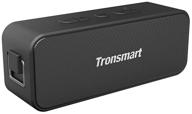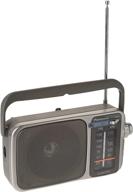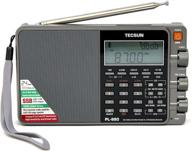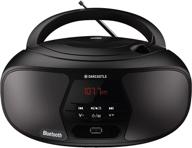
Review on 📻 Classic Walnut Tabletop AM/FM Wooden Radio - Sangean WR-15WL Review & Features by Jay Liu

Compairson -- Sangean WR-15, WR-11 and WR-11 SE
RADIO: I have a Sangean WR-15, WR-11 and WR-11 SE. Comparing all three side by side I find the internal electronics design to be very similar if not identical. All tune the same way, sync to stations the same way etc. All three are great radios, the best I've seen on the desktop radio market. The only difference between the WR-11 and the WR-11 SE is the bezel color. SOUND: The WR-15 has a slightly flatter base than the other two. I suspect this has to do with the size of the case and not differences in the electronics. The larger body of the WR-11 and WR-11 SE seems to give a deeper and richer base response. If you listen to AM talk radio, the WR-15 might be best for you. If you prefer FM music, the WR-11 or WR-11 SE might be for you. In any case, the difference is negligible, and some reviews say the deeper base can be remedied by inserting a couple of cotton swabs into the sound hole on the back of the WR-11 radios. POWER OUTPUT: All three radios have the same power output delivered to the speaker. POWER: The WR-15 power supply has a "socket" built into the cord that connects to 115 VAC. The other two WR-11's have a simple two pin power plug. All three work with 12 volts DC, as far as the internal electronics are concerned. Unfortunately, all three also use a "switch mode" power supply to convert the mains voltage to 12 volts DC. A comment from a radio supplier states that all radios imported into the US are required by law to use switching power supplies. While switching power supplies are more efficient than "linear" power supplies, they can also generate a bit of noise. in the AM radio band. This is usually heard as a low hum or buzz when listening critically to AM stations. Casual listeners will probably never notice this; critical listeners and headphone users do. The only way to get around this very minor problem on AM (it doesn't occur on FM) is to power the radio from a linear power supply connected to the 12V input on the back of the radio. . I've done this with several different linear power supplies and this eliminates the small amount of noise generated by the switching power supply that came with the radio (the switching power supply is built into the case of the WR-11 radios). Again, the difference between switching and linear power supplies will only be apparent to the most discerning AM listener, but they exist. 12 volt linear power supplies with a typical nominal voltage of 13.8 VDC are available on Amazon. Get one with at least four amps and avoid the wall warts advertised as linear. You will need to purchase a 5.5mm plug to match the 12V input on the back of the radio (also available from Amazon). FYI, 13.8 VDC is the rated output of the car or boat alternator when the car/boat is running; 12.0VDC is the output of a 12V battery when not charging. The radios don't care, both voltages work fine. RECEPTION: I live in a large metropolitan area so I can't comment on the poor signal reception as the furthest station I hear is no more than 60 miles away. Check other reviews for comments on this aspect of the radio. I can tell you as a radio amateur that really weak AM signals will require a $1,000+ communications receiver on the market to pick up those signals and filter out outside interference. SUMMARY: Each of the three radios discussed above is the absolute best desktop radio. radio I've ever heard. The build quality appears to be excellent and the accuracy far exceeds anything I've heard from such a radio. I really don't think you will find a better radio in this receiver class. A NOTICE. I left this review for both the Revain WR-15 and WR-11.
- Good value for money
- weak
New products
Comments (0)
Top products in Radios

Portable Acoustics Tronsmart Element T2 Plus, 20 W, black

18 Review

Perfeo Sound Ranger SV922 Red Radio

54 Review

Panasonic RF 2400 AM Radio Silver

23 Review

Tecsun PL880 Portable Digital PLL Dual Conversion AM/FM, Longwave & Shortwave Radio with SSB (Single Side Band) Reception - Silver

14 Review
Another interesting products

Experience Ultimate Music Enjoyment with Sony CD Boombox ZSPS50B.CED - USB Playback & Audio Input Included!

13 Review

SINGING WOOD Boombox Portable Bluetooth

9 Review

Gamepad GEN GAME X3 Bluetooth, black/red

23 Review

🎵 Oakcastle BX200 Boombox, Portable CD Player and FM Radio with Bluetooth Stereo Speakers and Multi-Connection Capability

9 Review

